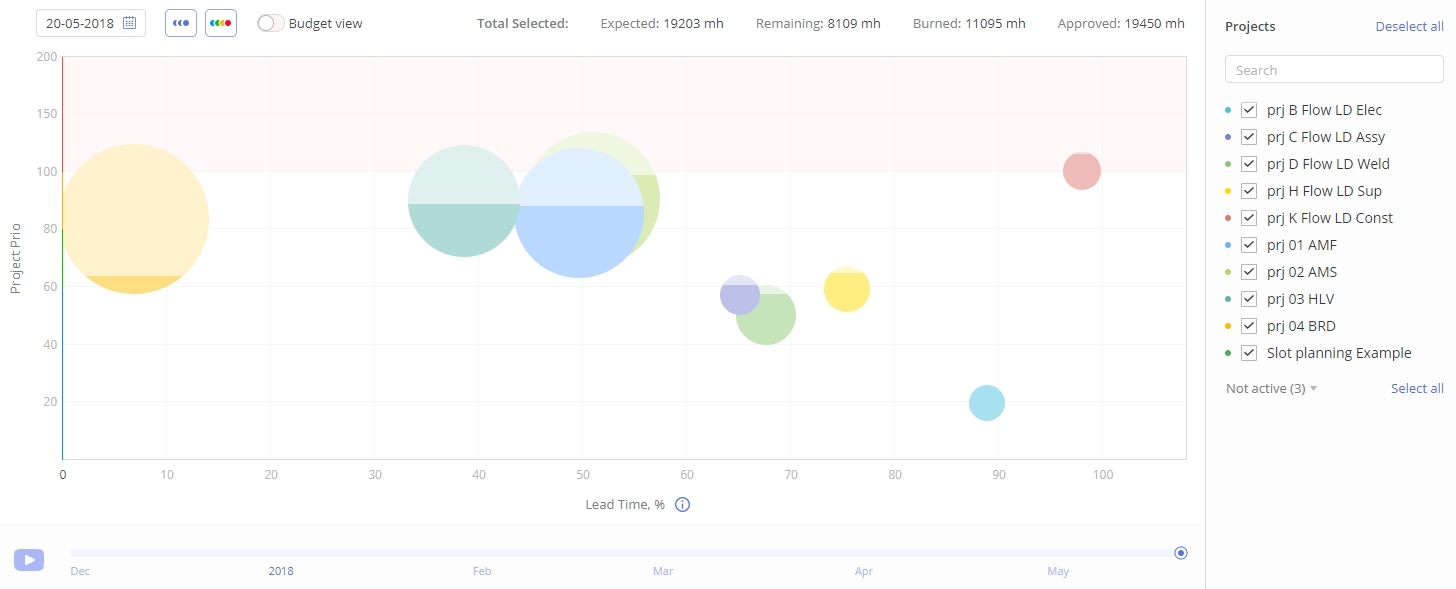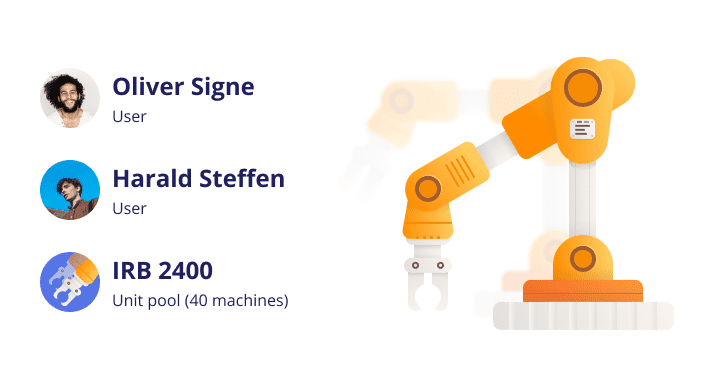To be able to stay competitive in the market and cope with any arising issues, aerospace engineering companies are expected to seek ways to improve operational efficiency in general and engineering processes in particular.
What drives the efficiency of aircraft projects? Let’s consider the key factors in the article.
Specific Characteristics of Aircraft Engineering Projects
First of all, let’s explore the essential characteristics of these projects, which impact their management strategy.
Aircraft engineering projects are among the most demanding ones in the engineering domain. They involve the design, development, testing, and production of aircraft and related systems. Here are some key specifics that define aircraft engineering projects.
- Stringent regulatory requirements.
- Using advanced materials and technologies.
- Complex project management.
- Constant testing and validation.
- High costs.
- Long project timelines.
- Dependence on supply chain challenges.
- The need to meet environmental and sustainability regulations.
Therefore, the successful execution of these projects requires technical excellence, and the right strategy to cope with a variety of hallenges that arising throughout the project lifecycle.
Tips on Managing Aircraft Engineering Projects with Maximum Efficiency

Keep control of changing requirements
As aircraft engineering involves the designing process, changes to the developed products are inevitable. However, when there is no control over these changing requirements, your project can easily go off the rails, which will result in missing due dates, dissatisfied customers, disengaged project team, and exceeding project budget. To avoid these unfavorable consequences, a project manager has to apply proper aircraft requirements management that involves:
- documenting the initial requirements,
- clarifying the consequences of changes to the stakeholders who require them,
- developing a change control procedure for every change request, which should be strictly followed by all the project participants.
Read more: Changing Requirements in Project Management: How to Stay on Track
Read more: How to Compile a Project Requirements Document
Pay attention to project dependencies
As a rule, the tasks within a project are dependent on each other: e.g., resource dependencies imply that the same team member is required for several tasks; logical dependencies indicate that a certain task cannot start until its predecessor is finished. A project manager has to be aware of all these dependencies within a project: if there are some problems with one task, how will it affect the other ones? What actions should be taken to mitigate the risks? Otherwise, insufficient attention to task dependencies may lead to significant delays and corresponding budget overrun.
What is more, a great number of aerospace engineering companies implement numerous projects at the same time. Such an environment poses additional challenges for aircraft project management — you need to cope with dependencies between all these projects and ensure efficient utilization of shared resources. This challenge can be successfully solved with the help of efficient project/resource management software that is capable of meeting the needs of a multi-project environment.
Read more: Managing Project Dependencies In a Multi-Project Environment
Ensure efficient collaboration within a team/between teams
One of the prerequisites for successful project management in the aviation industry is ensuring that a project team works like a single organism, where everyone knows their role and does their best to achieve a common goal. It gains even more importance when the team members work from various corners of the world, which makes their effective collaboration rather challenging. What helps project/resource managers ensure productive teamwork?
- Making sure that every team member clearly understands their role in a project: the scope of work that is expected from them, the timeline, successors and predecessors of their tasks.
- Ensuring that none of the team members is overloaded and hampers their colleague’s work.
- Leveraging an effective resource management solution – it shows changes occurring in a project’s workflow and in such a way provides a single source of truth for every team member as well as makes it possible to track the team’s progress.
Read more: 4 Tips on How to Manage Globally Distributed Teams with Maximum Efficiency
Apply proper risk management
Aircraft engineering projects are more than other domains subjected to various risks: changing market and technology trends, prices for raw materials, high costs, the need for implementing technological innovations, and any other contingencies related to a project’s scope, timeline, and resources. To be able to mitigate the negative consequences of unexpected situations, it’s important to develop a detailed risk management plan at the beginning. When a project is protected with such a plan, the team will have fewer surprises and know exactly how to respond to risk-bearing situations. Less surprises and better predictability make the work on a project much more efficient.
Read more: Project Risk Management: Importance, Challenging Issues, Recommendations
Manage your workflows with the right resource management tool
A significant part of the work on a project can be optimized thanks to leveraging an effective project/resource management solution. Creating the right project schedule, assigning resources with perfectly matching skills, forecasting future roadblocks, and providing real-time data on projects – this is just a part of the functionality available in resource management software.
Let’s examine how this works through the example of Epicflow. It’s a multi-project resource management solution developed by experts with about 20 years of experience in project management. Here are some of its functions that can increase the efficiency of managing aircraft engineering projects.
Keeping the focus on the highest-priority projects and tasks
Epicflow offers a different approach that increases chances for successful delivery of projects: no matter how many projects there are in the pipeline, every team member knows the most important tasks they should work on at the moment. It’s possible thanks to automatic task prioritization across the portfolio. In addition, the system analyzes all changes made by users (completing tasks, moving milestones, reassigning tasks, etc.) and automatically recalculates priorities, so that none of the important tasks are missed.
Monitoring a project’s health
Making sure that a project is on track and timely detection of bottlenecks is an important prerequisite for successful project delivery. It becomes even more essential when you have multiple projects underway with complex dependencies between their tasks and resources. Epicflow has several instruments that help monitor the state of projects:
- Pipeline presents a prioritized list of all current projects and milestones, and projects that require maximum management effort are placed at the top. For convenience, the projects are marked with colors depending on their “health”, so you can assess the state of your multi-project environment at a glance.
- Bubble Graph, which is an improved version of Fever Chart, demonstrates the size and structure of projects, the amount of remaining work and budget as well as possible roadblocks threatening a project’s success.

Read more: Bubble Graph: Critical Chain Fever Chart Re-Imagined
Keeping control of material resources
Aircraft engineering also deals with manufacturing, therefore it’s essential to manage material resources engaged in the production process. Epicflow makes it possible to specify material resources required for a project (raw materials, equipment, tools, etc.) and add all the necessary information about them (price, hourly rate, measurement unit, and risk factor). In addition, material resources used in a project can be united into a Unit Pool, which allows assigning tasks to them, specifying their availability, capacity, and the number of working hours per day.

Facilitating efficient resource utilization
One of the ways to increase project management productivity is efficient utilization of the available resources. In Epicflow, this can be achieved in several ways:
- thanks to task prioritization, so that every team member is focused on the most important assignments for the moment;
- with the Competence Management feature that makes it possible to keep track of every team member’s skills, their levels, and capacity as well as suggests the right talent to complete a certain task based on the above-mentioned data;
- by means of preventing employees from being over- or underloaded: in the Future Load Graph, you can see the team members’ workload in the future depending on their current tasks and adjust the situation if necessary; the Historical Load Graph allows you to analyze the team’s historical output and use this data to plan their workload.
Giving grounds for informed decision-making
It’s much easier to make the right decisions if you know exactly what consequences they will have. Epicflow’s What-if Analysis feature allows you to analyze possible outcomes: you can change various parameters (add or remove projects, move milestones, etc.) and see what these changes will result in.
Optimizing portfolio management
Epicflow allows for delivering projects with the highest business value under conditions of resource constraints. It prompts how to reschedule projects in the portfolio to deliver the highest-priority ones successfully.
Are you interested in learning more about Epicflow’s capabilities to increase the efficiency of your projects? Don’t hesitate to book a call with us.
Final words
- Aviation project management is affected by the ongoing challenges in the aerospace and defense industry.
- To manage aircraft engineering projects successfully, you should keep control of changing requirements, manage project dependencies, facilitate proper collaboration between teams, and effectively manage risks.
- The right project/resource management software can optimize all aspects of aviation project management and contribute to improving the outcomes of complex aerospace engineering projects.

